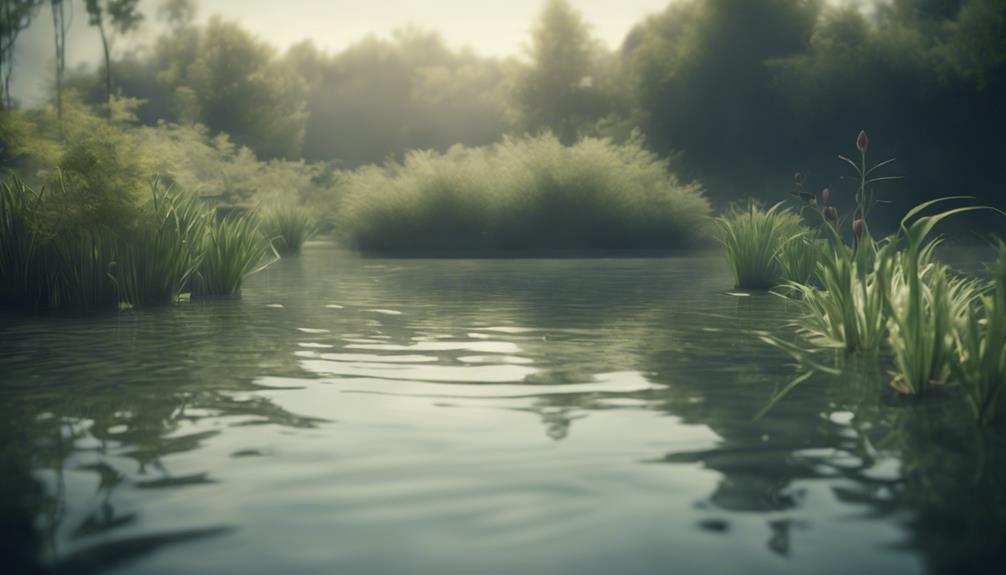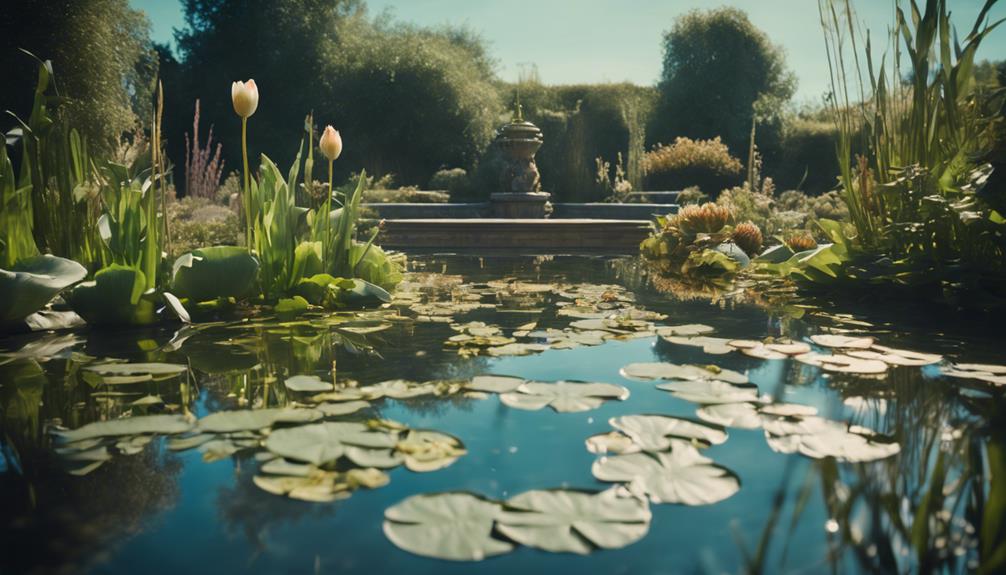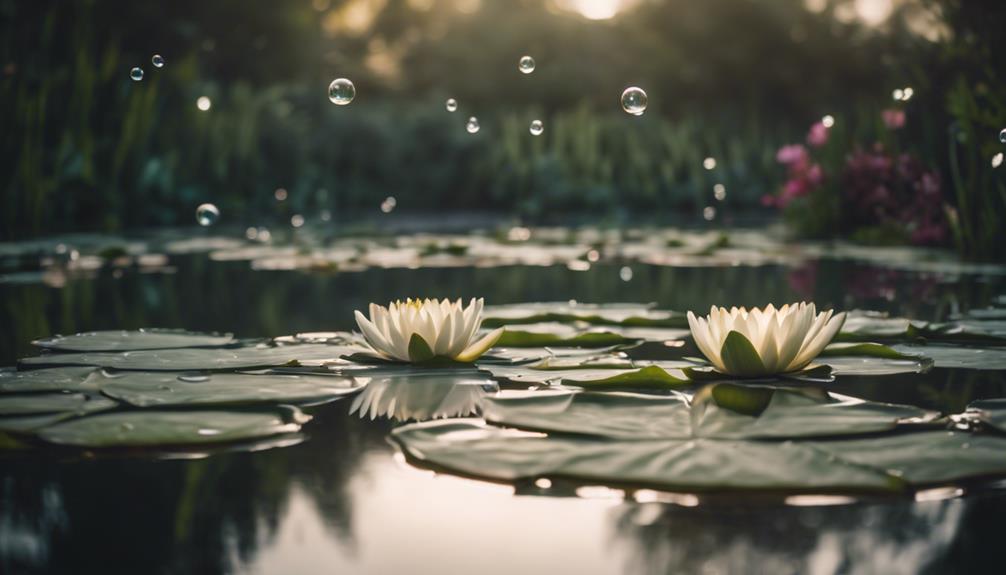You need an effective pond aeration kit that's tailored to your pond's unique characteristics, including its size, depth, and shape, to maintain a healthy ecosystem. First, consider your pond's size and depth to determine the type and capacity of aeration system required. Then, choose the right aeration type, such as a bottom diffused system, windmill aerator, or surface aerator, depending on your pond's specific needs. Finally, select the best aeration kit by considering factors like weighted airlines and diffuser placement to guarantee adequate oxygen circulation throughout your pond. By doing so, you'll be well on your way to creating a thriving aquatic environment.
Table of Contents
Key Takeaways
- Consider pond size and depth when selecting an aeration kit to ensure adequate oxygen circulation throughout the entire pond.
- Choose a bottom diffused aeration system for the most effective oxygen delivery to the pond bottom, especially for deeper ponds.
- Ensure the aeration kit includes a weighted airline to keep the diffuser submerged, even in windy conditions, for optimal performance.
- Select a kit that provides adequate oxygen levels throughout the pond, and consider pre-packaged solutions for a balanced ecosystem.
- Consider the pond's shape and size when determining the ideal aeration kit to create a thriving environment for aquatic life.
Consider Pond Size and Depth

When selecting a pond aeration kit, you must first ponder the size and depth of your pond, as these factors substantially impact the type and capacity of aeration system required to maintain a healthy and balanced ecosystem.
The pond surface area and depth are vital in determining the right aeration system for your pond. A shallow aeration system might be sufficient for smaller ponds, but deeper ponds require more powerful systems to oxygenate the entire pond.
Depths greater than 6 feet, for instance, require a more robust water aeration system to guarantee adequate oxygen circulation.
Choosing the right pond aeration system is essential to creating a thriving ecosystem.
A deep pond, for example, needs a system that can handle its larger volume of water. You'll want to weigh a system that can effectively oxygenate the entire pond, from the surface to the bottom.
Choose the Right Aeration Type
With your pond's size and depth in mind, you can now focus on selecting the right aeration type to meet its specific needs.
When it comes to choosing the right aeration type, you'll want to weigh the most effective way to add oxygen to your pond. Bottom diffused aeration systems are widely regarded as the most effective way to aerate your pond, as they deliver oxygen to the pond bottom where it's needed most.
If you don't have access to electricity, windmill aerators are a suitable option. However, if your pond is less than 1/4 acre, surface aerators and decorative fountains can create circulation and aeration at the pond's surface.
Keep in mind that fountains are aesthetically pleasing and help control surface debris, but they're not as effective at increasing oxygen levels as bottom diffused systems.
When selecting an aeration system provider, look for pre-packaged solutions like PondPlus+ PO2 that take into account your pond's size, depth, and number of diffusers needed to circulate water and increase oxygen levels, ensuring your pond is well-oxygenated and healthy.
Selecting the Best Aeration Kit

You're now ready to select the best aeration kit for your pond, considering factors such as diffuser size, air compressor power, and tubing length to guarantee maximum oxygen distribution and circulation.
For ponds deeper than six feet, a diffused aeration system with a single diffuser is often the most effective option. This setup allows for efficient oxygenation of deeper water, promoting healthy aquatic life.
When choosing an aeration kit, look for systems that aerate your pond effectively, providing adequate oxygen levels throughout. A weighted airline is essential to secure the diffuser remains submerged, even in windy conditions.
Give us a pond with the right aeration kit, and we'll get a thriving ecosystem. With various options available, it's vital to select a kit that suits your pond's specific needs.
Consider the pond's size, shape, and depth to determine the ideal aeration kit. By doing so, you'll create a balanced and healthy environment for your aquatic life to flourish.
Frequently Asked Questions
What Is the Most Efficient Way to Aerate a Pond?
When you're determining the most efficient way to aerate a pond, consider pond depths, aeration methods, and water quality, as ideal oxygen levels depend on pond size, aerator placement, pump efficiency, air flow rates, and bubble patterns that promote effective water circulation.
How Many Hours a Day Should I Run My Pond Aerator?
As you tiptoe into the world of pond aeration, you'll find that running your aerator for 8-12 hours a day during warm months and 4-6 hours during cold months is key to maintaining ideal oxygen levels, depending on your pond's size, depth, and seasonal changes.
Can You Aerate a Pond Too Much?
You risk aeration overload if you don't size your aerator correctly, leading to oxygen saturation, excessive bubbles, and water circulation issues that harm pond health, causing fish stress, oxygen depletion, and even death, especially in deeper ponds with inadequate aeration cycles.
Do Pond Aerators Really Work?
You're wondering if pond aerators really work? Yes, they do! By increasing oxygen levels, they improve pond health, water quality, and support thriving aquatic life, offering numerous benefits with efficient system design, cost-effective operation, and minimal environmental impact.
Conclusion
As you navigate the labyrinth of pond aeration kits, remember that finding the perfect fit is like uncovering the hidden treasure in a murky pond.
The right aeration kit will breathe new life into your aquatic ecosystem, much like an invigorating gust on a sweltering summer day.
By considering pond size and depth, choosing the right aeration type, and selecting the best kit, you'll decipher the secrets to a thriving pond, where aquatic life flourishes like a blooming water lily.

